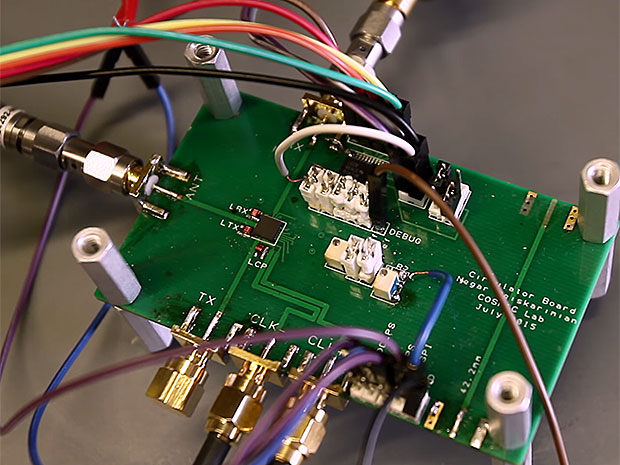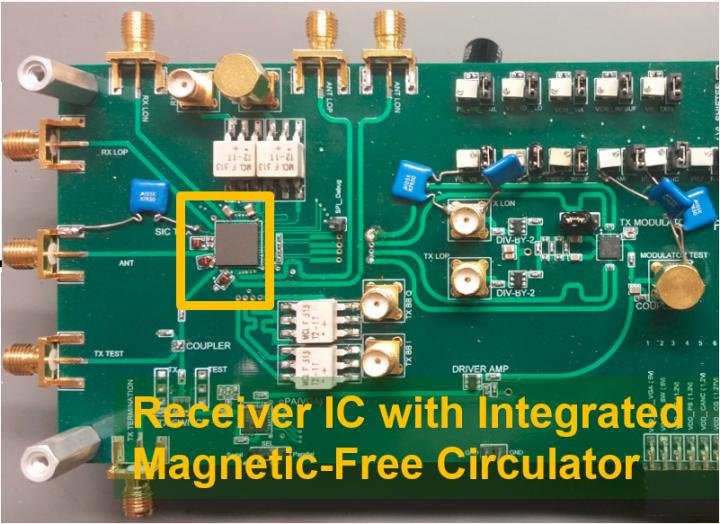Created a radio chip, simultaneously transmitting and receiving with a single antenna

Engineers from Columbia University managed to design a chip that can simultaneously transmit and receive data on the same frequency using the same antenna. In fact, the channel bandwidth is two times higher than that of classical wireless technologies. True, the chip is not yet able to work at the energy levels that are required for modern wireless networks.
Modern devices use separate antennas for receiving and transmitting signals, while they have to “negotiate” either on the division of transmission time (when data is received and transmitted in turn) or on different frequencies for receiving and transmitting signals.
')
Compared to traditional technologies, the new chip does not waste time and does not take extra frequencies, which allows you to transfer more data per unit of time and free up frequencies for other needs. The author of the technology Harish Krishnaswami [Harish Krishnaswamy] explains that it looks like a dialogue of two people talking to each other at the same time, and at the same time understanding each other perfectly. The technology under his guidance is developed by his student, Negar Reiskarimian
It was necessary to use two antennas because of the principle of reciprocity of Lorentz , in which electromagnetic waves travel along the same path, no matter if they propagate forward or backward. To circumvent this phenomenon, it is common practice to use circulators operating with magnets.

But such devices can not be placed on the chip because of the size and magnetism. Instead, the engineers placed the transistors in such a way that they redirect received and emitted signals, and as a result, they do not interfere with each other. As explained by Krishnaswami, the signals in the chip, in fact, circulate clockwise.
In addition, another technology developed in the same laboratory, the echo-canceling receiver, which solves the problem of the appearance of the "echo" of signals in full-duplex mode, did not prevent it. It subtracts parasitic echoes from the processed received signal, and thus clears it from noise.
So far, the chip is not ready to work in the usual GSM or WiFi networks - the power of its broadcast is from 10 to 100 mW. The next step in the work of engineers will be to improve the performance of the device.
Source: https://habr.com/ru/post/393181/
All Articles